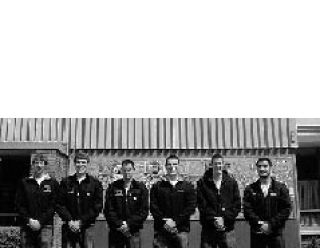High energy prices sent facility managers and building owners scrambling for ways to reduce their electric bills for the past two years. But schools located near a university with a student chapter of the National Electrical Contractors Association can tap into a new student competition to help improve their building’s energy efficiency.
The first Green Energy Challenge for NECA student chapters invites teams of students studying electrical construction, engineering, design and management to conduct an “energy audit” of a local K-12 school. An energy audit is an inspection and analysis of the power a building uses – what electrical systems are using the most energy and determining if there are ways that those systems can operate more efficiently and use less power.
For example, an older lighting system can be updated with ballasts and lamps that require significantly less electricity, but provide a better amount and quality of light. Additional savings can also be found by updating and integrating lighting controls.
Lake Tapps’ Scott McIntyre is a member of the University of Washington’s six-member team.
McIntyre, a junior at the UW who attended Auburn Riverside High School, and his team were assigned to 1950s-era Wedgewood Elementary School in the Seattle School District.
The student teams are responsible for working with the schools to develop and execute the energy audit plan. Based on their findings, students are to develop customized proposals for energy retrofits that would improve the schools’ energy efficiency. Teams also are to design a new solar and/or wind energy system for the facility.
“It was amazing,” McIntyre said of the experience. “We all learned so much.”
He was especially impressed by the hands-on experience that involved the electrical side of contracting.
“It put us in the mindset of what an electrical contractor does,” he said.
McIntyre’s team proposed electrical work to include lighting, distribution and photovoltaic systems. The students noted the school had already undergone a lighting retrofit, but suggested, “pushing the envelope” to provide an innovative solution to the current lighting and distribution systems to increase energy savings.
In addition to providing a cutting‐edge proposal, the team made several other proposals and, McIntyre said, became adept with the Seattle Public Schools policies and criteria regarding construction activities and established a close working relationship with the principal of Wedgwood Elementary.
The UW team estimated a cost for the project at $266,703 with a payback period of 8.6 years.
“It’s a very technically advanced program,” said David Riley, a professor at Penn State University and competition program adviser. “The problems aren’t hypothetical, so the solutions that students develop won’t be either. They will use real information to conduct the energy audits, and then base their retrofit recommendations on that information. They will use current technology and available products. Solar and wind proposals will also include a financing plan that taps new incentives and funding strategies.
Riley believes “real-world” experience better prepares students for careers in building design and construction. He points out that the NECA student chapters have an excellent professional resource for their proposals in NECA member contractors.
“Student teams are expected to work closely with their local NECA members on the Green Energy Challenge,” he said. “Electrical contractors prepare bids, estimates, and project analysis every day. Contractors can also guide the students to realistic solutions rather than glamorous ideas. Being a successful contractor means you understand your client’s needs. Our hope is that the clients are able to use the student’s work to start energy efficiency upgrades in their buildings.”
Team audit reports and proposals were turned in to NECA judges May 30. Entries will be evaluated by a committee of electrical construction experts, and three entries will be selected as finalists. These top three teams will receive complimentary registrations to the 2009 NECA Convention and Trade Show in Seattle, Sept. 12-15, where they will present their projects and the winning solution will be selected.
Other teams competing were from Bowling Green State University, Iowa State University, Penn State University, Purdue University and the University of Wisconsin-Madison.
Courier-Herald reporter Brenda Sexton contributed to this press release from NECA and Keeley Hozjan, public affairs practice, Waggener Edstrom Worldwide.


